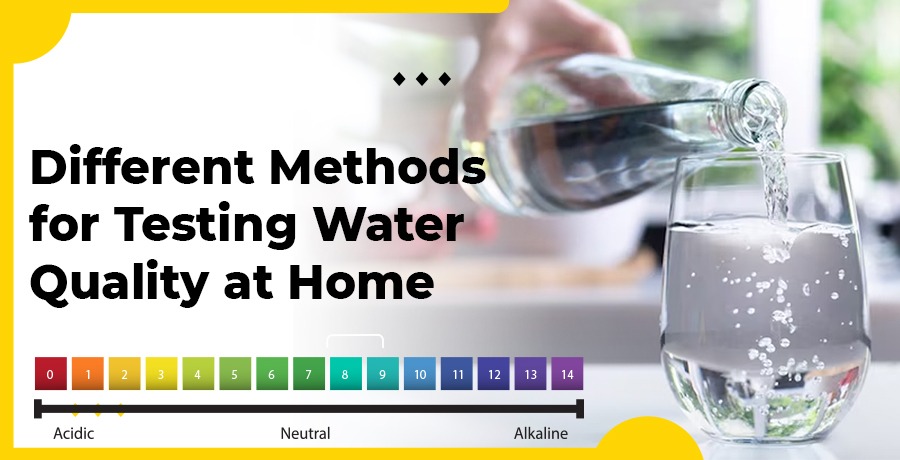Introduction
Access to clean and safe drinking water is essential for our health and well-being. While many people rely on municipal water supplies, it's crucial to periodically test the water quality to ensure it meets safety standards. Fortunately, there are various methods for testing water quality at home. In this article, we will explore these methods, helping you maintain peace of mind about the water you and your family consume.
- Water Quality Test Strips
Water quality test strips are one of the easiest and most affordable ways to assess your water. They are readily available at hardware stores, online retailers, or even from your local health department. Test strips can help detect various parameters, including pH levels, chlorine, hardness, and the presence of specific contaminants like lead, nitrates, and bacteria.
TO USE WATER QUALITY TEST STRIPS, FOLLOW THESE GENERAL STEPS
- Dip the strip into a water sample.
- Wait for the specified time (usually a minute or less).
- Compare the colour change on the strip to the provided colour chart to determine the results.
- DIY Bacterial Tests
Bacterial contamination, such as the presence of E. coli or coliform bacteria, is a critical concern for water safety. You can conduct DIY bacterial tests at home using commercially available test kits. These kits often contain containers and reagents to help you collect and analyse water samples.
HERE'S HOW TO PERFORM A DIY BACTERIAL TEST
- Collect a water sample as instructed in the kit.
- Add the provided reagent to the sample.
- Incubate the sample according to the instructions.
- Observe any color change or growth in the sample.
- Water Testing Kits
Water testing kits offer a comprehensive approach to analysing water quality. These kits typically include a range of tests to assess multiple parameters, including pH, chlorine, hardness, iron, lead, copper, and bacteria. Some kits are designed for general testing, while others focus on specific concerns like well water testing.
TO USE A WATER TESTING KIT
- Collect a water sample according to the instructions.
- Perform the tests as outlined in the kit.
- Follow the provided guide or manual to interpret the results.
- Professional Water Testing Services
If you want a more thorough and accurate assessment of your water quality, consider professional water testing services. Many accredited laboratories specialise in water analysis and can provide you with detailed reports on various parameters, including chemical contaminants, heavy metals, and bacterial contamination.
TO UTILISE PROFESSIONAL WATER TESTING SERVICES
- Contact a reputable laboratory in your area or search online for options.
- Follow their sample collection guidelines, which may involve specific containers and sampling procedures.
- Send the sample to the laboratory or arrange for a technician to collect it.
- Water Quality Apps
In today's digital age, there are even smartphone apps available to test water quality. These apps often use the phone's camera to analyze color changes in water test strips. While they can provide quick and convenient results, they may not be as accurate as professional testing.
TO USE A WATER QUALITY APP
- Download a water testing app of your choice.
- Take a clear photo of the test strip after following the instructions.
- Use the app to interpret the results.
Conclusion
Ensuring the quality of your drinking water is a vital aspect of maintaining a healthy and safe home environment. With the various methods for testing water quality at home, you can easily monitor your water supply for potential issues. Whether you opt for water quality test strips, DIY bacterial tests, water testing kits, professional services, or water quality apps, regular testing provides peace of mind and the opportunity to address any water quality concerns promptly. Remember that accurate and consistent testing is essential for your family's well-being, so choose the method that best suits your needs and circumstances.


